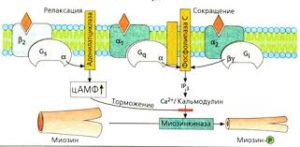
Stimulants: Increase in catecholamines
The class of stimulants is quite extensive and includes substances that differ from each other in the type of effects, united by the simple fact of increasing the constancy in the circulation of catecholamines, neurotransmitters with a fundamental role in the control of autonomic, motor and mental functions.
They are a tool with the help which the sympathetic nervous system activates its functions, therefore regulates the cardiovascular and muscular systems, as well as mental functions.
Catecholamines are three different neurotransmitters
-
- Dopamine
- Norepinephrine
- Adrenaline
Occurs due to the metabolism of tyrosine with activity in two transmission systems:
-
-
- dopaminergic
- adrenergic
-
Norepinephrine and adrenaline act both on the adrenergic system, the first mainly on the activity of the nervous system, the second on the peripheral tissue.

Catecholamines work by interacting with receptors located on different organs and tissues: dopamine acts on dopaminergic receptors (D1, D2, D3, D4 and D5), while norepinephrine and adrenaline on adrenergic receptors (α1, α2, β1, β2 and β3).
Each of these receptors is present only in certain tissues and, if activated by a neurotransmitter or a substance that mimics its activity, it performs characteristic functions in the target cell.
Summary table of the functions of the catecholamine systems (adrenergic and dopaminergic)
| Receptor | Tissue | Organ | Response |
|---|---|---|---|
| Adrenergic system | |||
| α 1 | Muscle Iris | Eye | Reduction (mydriasis) |
| Musculature smooth vessel | Arterioles, coronary vessels | shorthand | |
| Smooth muscle of organs | Stomach, intestines | relaxation | |
| hepatocytes | liver | Glycogenolysis, gluconeogenesis | |
| neurons | CNS | Waking state | |
| α 2 | nerve endings | nerves | inhibition of norepinephrine release |
| Vascular smooth muscle | Coronary arterioles | shorthand | |
| tubules | kidney | Decreased excretion of Na, K, Cl | |
| β-cells | pancreas | Decreased insulin secretion | |
| platelets | blood | aggregating | |
| SN C | pituitary gland | increased Gh secretion | |
| β 1 | heart muscles | heart | Increase in frequency, contractility and rate of contraction |
| Juxtaglomerular apparatus | kidney | Increased renin secretion | |
| β 2 | Vascular smooth muscle | Arterioles, coronary artery | relaxation |
| organ smooth muscle | relaxation | ||
| Skeletal muscle | muscles | glycogenolysis, increased force of contraction | |
| hepatocytes | liver | Glycogenolysis, gluconeogenesis | |
| β 3 | adipocytes | adipose tissue | lipolysis |
| Dopaminergic system | |||
| D1 | Thalamus, hypothalamus, limbic system, striated | CNS | Activation of adenylate cyclase |
| D2, D3 | Striatum, substantia nigra, pituitary gland, | SNC | Inhibition of adenylate cyclase |
| bulb, frontal cortex | CNS | Inhibition of adenylate cyclase | |
| D5 | Hippocampus, hypothalamus | SNC | Activation of adenylate cyclase |
How The actions of catecholamines highlighted in the table, in particular effects on β-receptors , determine the increase in muscle contraction force, increase the energy availability of the body, stimulate respiration and blood circulation, determine the greater availability of oxygen. These actions guarantee a high ergogenic effect that can improve the athlete’s ability.
Dopamine and norepinephrine are neurotransmitters that improve psychophysical performance by accelerating certain biological functions, and therefore the substances that promote its activity or mimic its effects determine the body’s best response to physical effort.
Stimulants actually have multiple effects on the body:
- They improve the sense of alertness
- They reduce feelings of fatigue
- They increase physical ability by increasing metabolism
- They increase the threshold of fatigue
- They relieve hunger and fatigue
- They evoke euphoria, self-confidence and a desire to act
The action of these substances is realized both in the central nervous system, causing behavioral effects, and in the body by influencing physiological functions.
Stimulants activate the body:
- Increased tissue circulation and oxygenation
- Cognitive enhancement
- Releasing Energy Substrates
- Increase muscle energy production
-

These substances are also called sympathomimetics because they mimic the action of the sympathetic nervous system and prepare the body for a fight-or-flight response, that is, a situation of danger and emergency (fight or flight) that one has to face using all available answers; for this, the body is activated by increasing pulmonary circulation and ventilation and increasing blood flow to the muscles .
All of these actions are typical of epinephrine and norepinephrine is enhanced by stimulants.
Increases energy production and muscle contraction by increasing the use of sugars and lipids within cells. In addition, the parasympathetic activity responsible for the autonomic action of the body is reduced (digestion, relaxation, sleep, etc.). In the central nervous system, the action of the sympathetic system determines an increase in nervous functions, an improvement in cognitive abilities, alertness, a physical sense of vigor and a change in character functions, stimulation of aggression, self-confidence, self-esteem, etc.
Therapeutic Uses of Stimulants
Stimulants have had various therapeutic uses throughout their history. In fact, they were used to treat diazma, obesity, attention disorders, narcolepsy, and various other neurological disorders before potential abuse became apparent.
History stimulants are as old as humans, in fact, several plants containing substances with mimetic sympathetic effects have been used in the distant past by primitive populations to combat fatigue and improve work skills. This applies to coffee, guarana, kata, ephedra, tea and coca.
The potent effects of stimulants also pose a high risk and can also lead to numerous side effects, as they can cause effects such as nervousness, anxiety, agitation and paranoia, they can cause tachycardia and fever. lead to insomnia and excessive fatigue, which can lead to fainting, depression and even death.
Some of these substances can increase addiction.

Stimulants are still used clinically and, therefore, are available as medicines to treat various diseases:
- Nasal decongestants: for the action of α1-adrenergic receptor-mediated vasoconstriction in the nasal mucosa, reducing mucosal edema reduces α1-adrenergic receptor-mediated congestion
- Treatment of heart failure: for the positive inotropic effect of β1-adrenergic receptor-mediated cardiac stimulation by increasing the force of contraction of the heart
- Ocular action: acting on the α1-adrenergic receptor dilates the pupil by contracting the dilator muscle, and also reduces intraocular pressure
- Treatment of excess weight as an appetite suppressant (anorectic drugs), due to the activation of the sympathetic nervous system, they act as stimulants of metabolism and suppressing appetite, this type of activity is called anorectics . In particular, amphetamines were the first class of substances used for this purpose, due to the large number of side effects, numerous deaths due to abuse and strong induced dependence, this class of substances has been abandoned, however, in the aforementioned therapy, other stimulants with a milder effect and with a lower frequency of side effects are all also used as an adjuvant in weight loss diets
- Treating attention deficit disorder. Medications such as Ritalin (methylphenidate) have been used for this type of disorder, however recent results indicate that the short-term benefits of this therapy were not reflected in the long-term benefits.
- Treatment of narcolepsy: the sympathomimetic effect promotes central catecholamine activity and therefore a sense of alertness.
